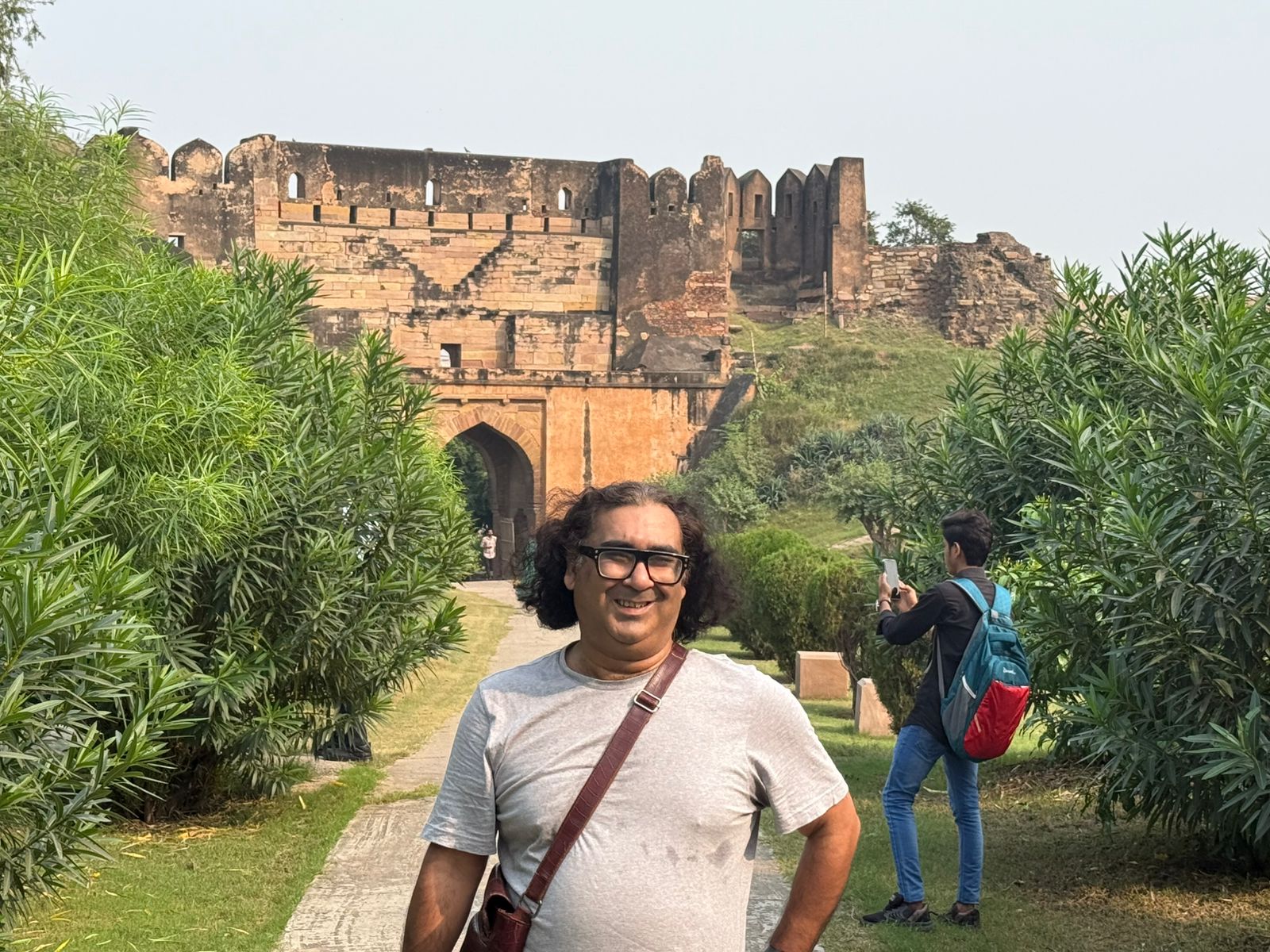The Shahi Qila, also known as the Jaunpur Fort, was built in the 14th century and is located very near the Gomti River and the Sahi Pul. The Rathore rulers of Kanauj sent most of the materials used to build the fort, but it was demolished multiple times during the time of the Lodi and Tughlaq dynasties. Over time, it was damaged and destroyed by these rulers.
Situated on the left bank of the Gomti River, the fort was built by Feroze Shah Tughlaq in 1362 AD. It is a protected monument and is open to the public. Visitors must pay an entry fee of twenty rupees to enter the fort and explore its opulent, well-kept gardens. The fort is well-maintained and is neat and clean. One of the best things to see inside the fort is the famous Turkish Bath and the mosque.
Old Shahi Fort: Jaunpur City
The central gate is 36 feet high and was built by Munner Khan. The gate is studded with blue and yellow stones, giving it a unique texture.
From the fort, one can get a panoramic view of the entire city and a full-length view of the Gomti River as well. It is a great place to take pictures and capture the city in one frame. Visitors can easily walk around the gardens for hours. My favorite part was the Turkish Bath. I ventured deep inside and saw how the water would fall into the bath, where nobles and kings would bath, with the facility of both hot and cold water. There were also hamams where people could get steam and relax, even receive massages. There were chambers and vents that made the place airy and cool. It is like a Bhool Bhulaiya, with chambers within chambers. There are several corridors and openings that allow light to seep into the various chambers. Water channels and tubs in each room are interconnected like a maze.
Just next to the bath is the royal mosque, built by the great Ibrahim Banbak. The fort itself was built by Naib Bank, a lieutenant of Feroze Shah Tughlaq.
The rectangular mosque is the oldest masjid in the city. It is supported by 12-meter-tall pillars with Persian inscriptions carved on them.
I enjoyed my afternoon here and had worked up quite an appetite. Our next stop was certainly going to be an eating joint, so Tiwari and I decided to go to a Batti Choka restaurant for our late lunch.























